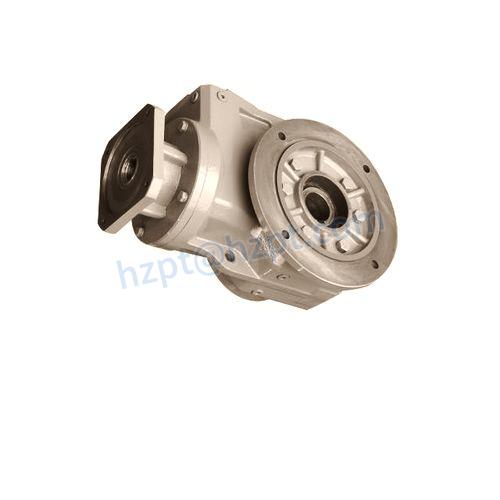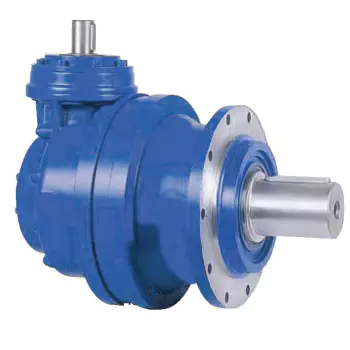Product Description
Detailed Photos
Features of S series reducer
The same model can be equipped with motors of various powers. It is easy to realize the combination and connection between various models.
The transmission efficiency is high, and the single reducer efficiency is up to 96%. three
The transmission ratio is subdivided and the range is wide. The combined model can form a large transmission ratio and low output speed.
The installation forms are various, and can be installed with any foot, B5 flange or B4 flange. The foot mounting reducer has 2 machined foot mounting planes.
Helical gear and worm gear combination, compact structure, large reduction ratio.
Installation mode: foot installation, hollow shaft installation, flange installation, torque arm installation, small flange installation.
Input mode: motor direct connection, motor belt connection or input shaft, connection flange input.
Average efficiency: reduction ratio 7.5-69.39 is 77%; 70.43-288 is 62%; The S/R combination is 57%.
S57 SF57 SA57 SAF57 S series helical worm gear box speed reducer 0.18kw 0.25kw 0.37kw 0.55kw 0.75kw 1.1kw 1.5kw 2.2kw 3kw, max. permissible torque up to 300Nm, transmission ratios from 10.78 to 196.21. Mounting mode: foot mounted, flange mounted, short flange mounted, torque arm mounted. Output shaft: CHINAMFG shaft, hollow shaft (with key, with shrink disc and with involute spline).
S series helical gear worm reducer
Features of products
1. The S series helical gear worm gear motor has a high technological content. It has a helical gear and a worm gear combined with an integrated transmission to improve the torque and efficiency of the machine. This series of products have complete specifications, wide speed range, good versatility, adapt to various installation methods, safe and reliable performance and long life, and have implemented international standards.
2. The uneven surface of the body has the effect of heat dissipation, strong vibration absorption, low temperature rise and low noise.
3. The machine has good sealing performance and strong adaptability to the working environment.
4. The machine has high transmission accuracy, and is especially suitable for working in occasions with frequent starting. It can be connected to various types of reducers and equipped with various types of motor drives, and can be installed in the 90-degree transmission operating position.
5. The key components of the motor are made of highly wear-resistant materials and undergo special heat treatment. They have the characteristics of high machining accuracy, stable transmission, small size, large carrying capacity, and long life.
6. The reducer can be equipped with various types of motors, forming a mechatronics, which fully guarantees the quality characteristics of the product.
|
Gearing Arrangement |
Helical-worm |
|
Output Torque |
10-4484 Nm |
|
Input Speed |
Reference details page |
|
Output Speed |
0.21-12 r/min |
|
Color |
Customizable |
|
Certificate |
ISO9001 |
|
Structure |
SF |
|
Input power rating |
0.55-7.5 |
|
Ratio |
9.96-241.09 |
|
Maximum torque |
1270 |
|
Input Configurations |
Equipped with Electric Motors |
|
Applicable Motors |
Single Phase AC Motor, Three Phase AC Motor |
|
Output Configurations |
CHINAMFG Shaft Output |
|
nstallation |
Foot-mounted |
|
Lubrication |
Oil-bath and Splash Lubrication |
Product Parameters
For more models, please contact us!
F helical gear reducer
Parallel output, compact structure, large transmission torque, stable operation, low noise and long life.
Installation method: base installation, flange installation, torque arm installation.
Reduction ratio: basic type 2 level 4.3-25.3, 3 level 28.2-273, combined to 18509.
The rotation direction of the input and output of the basic two-stage is the same, and the three-stage is opposite; please consult when combining.
Output mode: hollow shaft output or CHINAMFG shaft output.
Average efficiency: Level 2 96%, Level 3 94%, F/CR average efficiency 85%.
K helical bevel gear reducer
Vertical output, compact structure, hard tooth surface transmission torque, high-precision gears ensure stable work, low noise
and long life.
Installation method: base installation, flange installation, torque arm installation, small flange installation.
Input mode: motor direct connection, motor belt connection or input shaft, connection flange input.
Output mode: hollow shaft output or CHINAMFG shaft output, the average efficiency is 94%.
Reduction ratio: basic type 8.1-191, combined to 13459.
R helical gear reducer
Small bias output, compact structure, maximum use of cabinet space, the second and third levels are in the same cabinet. Using an integral cast box, the box structure has good rigidity, which is easy to improve the strength of the shaft and the life of the
bearing.
Installation method: pedestal installation, flanges with large and small flanges are easy to choose.
CHINAMFG shaft output, the average efficiency is 96% in the second stage, 94% in the third stage, and 85% in CR/CR. The CRM series specially designed for mixing can carry large axial and radial forces.
Company Profile
Certifications
Packaging & Shipping
FAQ
/* January 22, 2571 19:08:37 */!function(){function s(e,r){var a,o={};try{e&&e.split(“,”).forEach(function(e,t){e&&(a=e.match(/(.*?):(.*)$/))&&1
| Hardness: | Hardened Tooth Surface |
|---|---|
| Installation: | 90 Degree |
| Layout: | Expansion |
| Gear Shape: | Bevel Gear |
| Step: | Single-Step |
| Type: | Gear Reducer |
| Samples: |
US$ 80/Piece
1 Piece(Min.Order) | |
|---|

Choosing Lubrication for Angle Gearboxes
When selecting lubrication for angle gearboxes, several critical considerations should be taken into account:
- Operating Conditions: The operating environment, temperature range, and exposure to moisture or contaminants play a significant role in determining the type of lubricant needed.
- Load and Torque: The load-carrying capacity and torque requirements of the gearbox impact the choice of lubricant viscosity and additives.
- Speed: The speed of the gearbox influences the lubricant’s ability to form and maintain a protective film between gear surfaces.
- Materials: Consider the materials of the gears, bearings, and other components to ensure compatibility with the lubricant.
- Lubricant Type: Choose between oil and grease lubrication, considering factors like lubrication intervals, leakage, and sealing effectiveness.
- Viscosity: The lubricant’s viscosity should match the gearbox’s operational requirements, providing sufficient film thickness without causing excessive drag.
- Extreme Conditions: In extreme temperatures or harsh conditions, specialized lubricants with additives for high-temperature, low-temperature, or extreme-pressure performance may be necessary.
- Sealing: The gearbox’s sealing effectiveness impacts lubricant retention and protection against contaminants.
- Compatibility: Ensure that the chosen lubricant is compatible with any existing lubricants or residues to prevent chemical reactions.
- Maintenance: Consider ease of lubricant replenishment and maintenance intervals when selecting a lubrication solution.
Choosing the appropriate lubrication for angle gearboxes is essential to ensure smooth operation, minimize wear and friction, extend the gearbox’s lifespan, and maintain overall efficiency and reliability.

Efficient Power Transmission and Motion Control with Angle Gearboxes
Angle gearboxes play a crucial role in ensuring efficient power transmission and precise motion control in various mechanical systems. They achieve this through several mechanisms:
- Gear Arrangement: Angle gearboxes use a combination of gears, such as bevel gears, worm gears, or hypoid gears, to redirect the rotational motion efficiently while changing the direction of the output shaft.
- High Gear Ratios: Many angle gearboxes incorporate high gear ratios, allowing them to convert high-speed, low-torque input into lower-speed, higher-torque output. This is particularly useful in applications where high torque is required, such as heavy machinery or industrial equipment.
- Precision Engineering: Angle gearboxes are designed with precision to minimize backlash and gear play. This ensures accurate and reliable motion control, which is essential in applications demanding precise positioning and synchronization.
- Lubrication and Sealing: Proper lubrication and sealing in angle gearboxes reduce friction and wear, contributing to efficient power transmission. Well-maintained gearboxes experience less energy loss due to friction and heat generation.
- Material Selection: High-quality materials and advanced manufacturing techniques are used to construct angle gearboxes. This ensures that components can handle the loads and stresses without excessive wear or failure, promoting efficient power transfer.
- Alignment and Assembly: Accurate alignment during the assembly of angle gearboxes prevents misalignment-related losses and reduces strain on gears and bearings, resulting in smoother power transmission.
Whether in industrial machinery, automotive systems, or other mechanical applications, angle gearboxes contribute to efficient power transmission and motion control by optimizing gear arrangements, minimizing energy losses, and providing reliable performance over extended periods.

Types of Angle Gearboxes and Their Functions
Angle gearboxes, also known as bevel gearboxes, come in different types, each designed for specific functions and applications. The various types of angle gearboxes include:
- Straight Bevel Gearbox: This type of angle gearbox features straight-cut bevel gears with intersecting shafts set at a 90-degree angle. It is commonly used for changing the direction of rotational motion in applications such as automotive differentials and power tools.
- Spiral Bevel Gearbox: Spiral bevel gearboxes utilize spiral-cut bevel gears that offer smoother and quieter operation compared to straight-cut gears. They are employed in applications where reduced noise and improved load-carrying capacity are important, such as in heavy machinery and vehicles.
- Skew Bevel Gearbox: Skew bevel gearboxes have shafts set at an angle other than 90 degrees. They are used in applications where the intersecting shafts do not align at a right angle. Skew bevel gears are often found in industrial machinery and equipment that requires a specific angle of transmission.
- Hypoid Gearbox: Hypoid gearboxes feature hypoid gears, which are a variation of bevel gears with offset axes. This design allows the gears to mesh smoothly while reducing noise and increasing torque transmission efficiency. Hypoid gearboxes are commonly used in automotive applications like rear-wheel-drive systems.
- Angular Bevel Gearbox: Angular bevel gearboxes are designed for applications where the angle between the input and output shafts is adjustable. They are used in situations where the desired transmission angle can be changed to achieve specific mechanical requirements.
Each type of angle gearbox serves a distinct purpose, catering to various industries and applications. Their designs are optimized to provide efficient motion transmission, reliable performance, and the ability to accommodate different angles and loads.


editor by CX 2024-05-08
